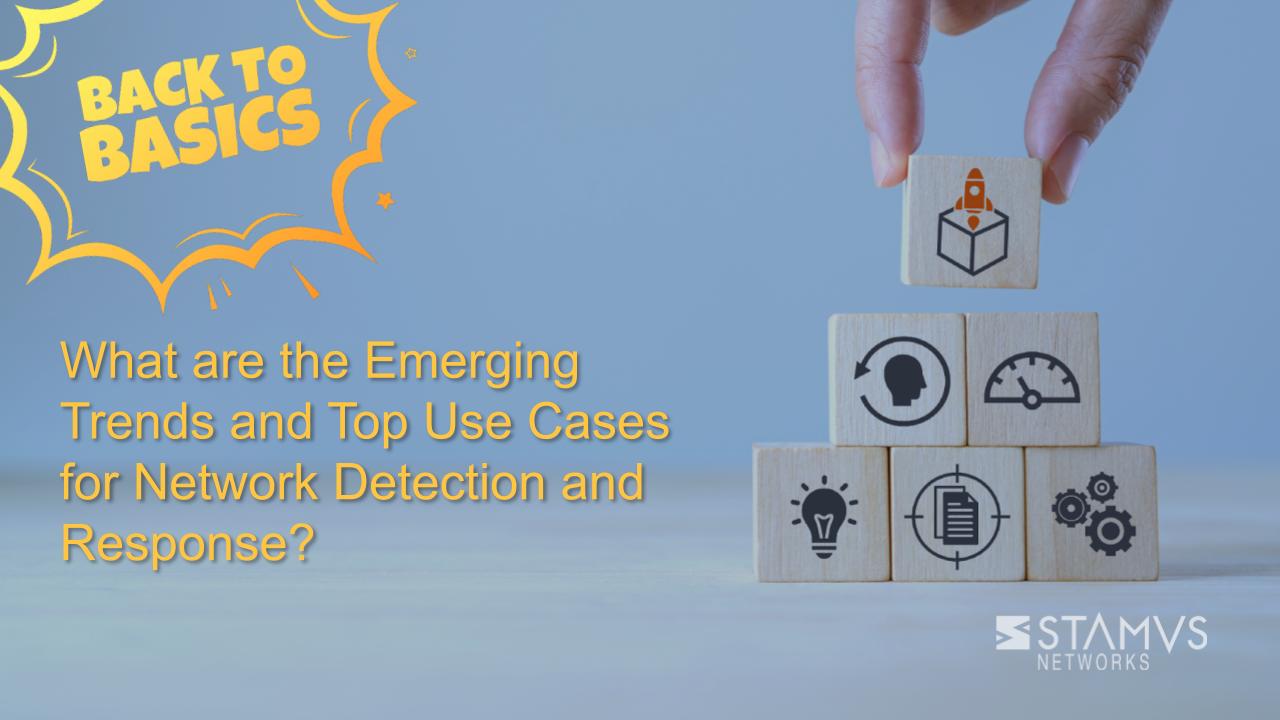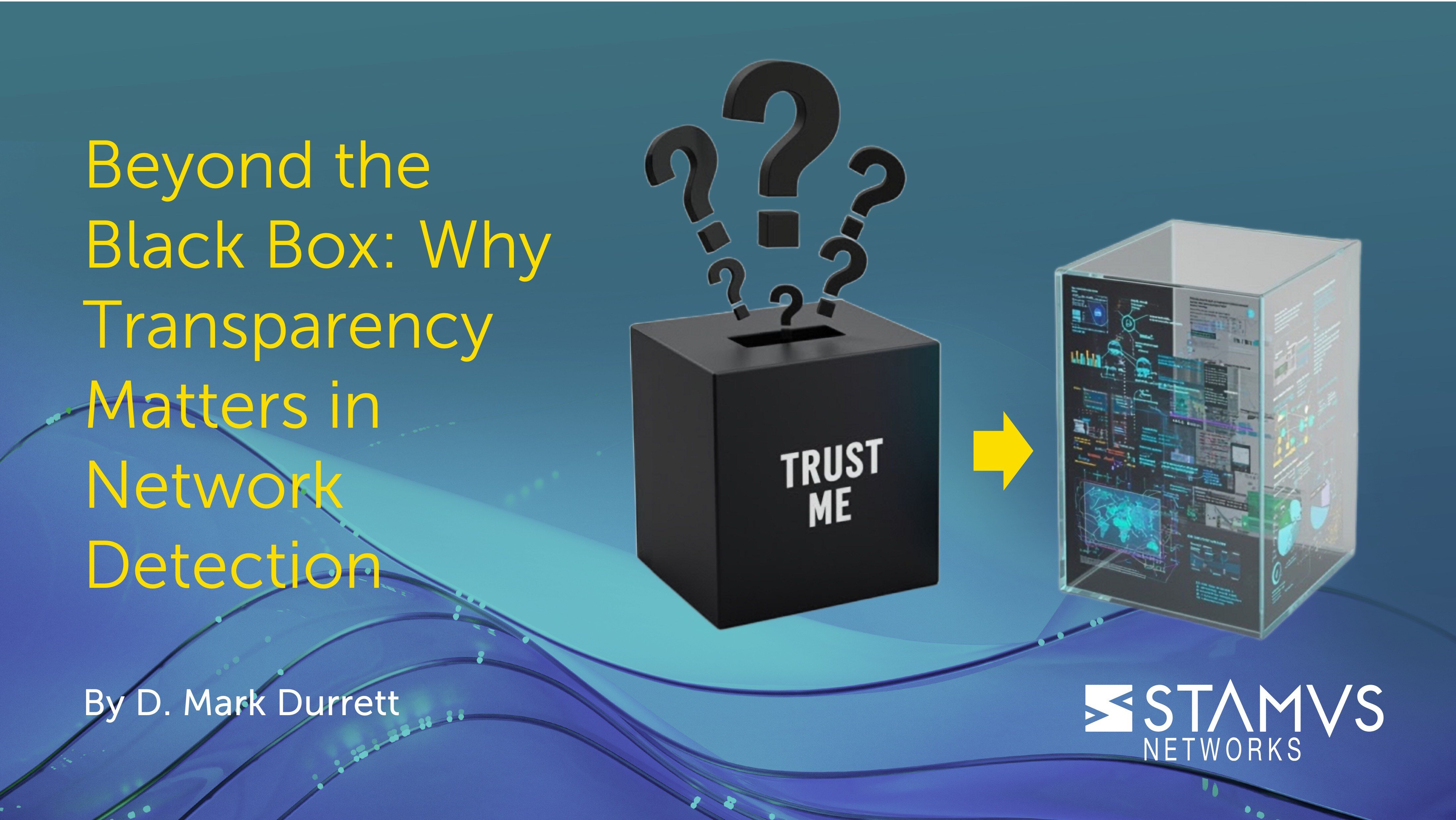The cybersecurity landscape is constantly changing, with threat actors always looking for new vulnerabilities and more sophisticated means of attack. This is why network detection and response (NDR) has emerged as a growing line of defense for many organizations around the world.
As the market for NDR grows and NDR products mature, more network detection and response use cases continue to be discovered. Before we take a look at some of the emerging trends and top use cases for network detection and response, let’s review what NDR is.
What is network detection and response?
Network detection and response solutions continuously monitor network traffic for suspicious activity and cyber threats. Using various techniques like machine learning, behavioral analytics, and anomaly detection, NDR solutions identify threats that traditional signature-based threat detection methods might miss.
Network detection and response solutions provide security teams with real-time visibility into network activity, which empowers them to:
- Detect threats such as malware, ransomware, remote access trojans, crypto-miners, advanced persistent threats (APTs), and more
- Investigate suspicious traffic or activity to identify the root cause of an incident or stop an attack before it causes damage
- Respond to threats quickly and efficiently to minimize damage
NDR solutions are rapidly becoming an essential component of any comprehensive cybersecurity strategy, particularly for organizations with complex hybrid networks and sophisticated adversaries.
How big is the NDR market?
The rapid adoption of NDR solutions reflects the growing importance of this technology in the modern cybersecurity landscape. The 2022 Gartner NDR Market Guide claims that the NDR market is growing at a rate of 22.5% and Coherent Market Insights estimates that the NDR market will increase from $3.15 billion in 2023 to $7.4 billion by 2023.
This growth is driven by several factors, including:
- The increasing sophistication of cyberattacks
- The rise of hybrid and cloud environments
- The need for deeper visibility into network traffic
- The potential for automation to improve response times.
With the market expected to continue growing in the coming years, organizations should carefully consider their NDR options and choose solutions that align with their specific needs and security posture.
What are the emerging trends and top use cases for network detection and response?
The emerging trends and top use cases for network detection and response tools largely center around improvements to automated intelligence and integration with other security products.
Let’s review trends and use cases separately.
Emerging Trends
The following trends have recently emerged in the network detection and response market:
- AI and Machine Learning Integration:
Advanced NDR solutions are increasingly using artificial intelligence (AI) and machine learning (ML) to refine their threat detection capabilities. ML algorithms can analyze vast amounts of network traffic data to identify subtle attack signals and anomalies and theoretically predict malicious activity with greater accuracy. - Cloud-based NDR:
As organizations migrate more workloads to the cloud, the demand for cloud-based NDR solutions is growing. These solutions offer several advantages, including scalability, flexibility, and reduced on-premises infrastructure. - XDR Integration:
Some NDR vendors are expanding their solutions into extended detection and response (XDR) systems. The goal of this evolution is often to include additional telemetry sources and provide a more holistic view of threats across the entire IT environment. - Focus on Automated Incident Response:
With the growing volume and sophistication of cyber attacks, many NDR vendors are attempting to include more context into their automated alerts and apply machine learning and AI to their incident response procedures. Many NDR tools include features that aggregate events into security incidents, but many NDRs fall short when it comes to effectively automating incident response protocols.
Top Use Cases
These are some of the top new use cases for network detection and response:
- Lateral Movement Detection
Attackers commonly move laterally within a network after gaining initial access through a single system. NDR is highly effective at detecting this type of activity by identifying unusual east-west traffic patterns and anomalous communication between devices. - Insider Threat Detection
Insider threats posed by malicious actors, compromised employees, or policy violations can be particularly difficult to detect. However, NDR solutions are well poised to identify anomalous network activity associated with internal accounts, such as excessive data exfiltration, unauthorized access, or the use of systems not approved by the organization’s IT department. - Supply Chain Security
The increasing interconnectedness of businesses makes supply chains a prime target for attackers. NDR tools can help monitor network traffic between an organization and its suppliers, identifying suspicious activity that might indicate a compromised supply chain partner.
What is the future of network detection and response?
As the NDR market continues to evolve, several key trends are expected to shape the future of this technology:
- Deeper integration with AI and ML: The role of AI and ML in threat detection continues to grow, with NDR solutions becoming even more adept at identifying subtle anomalies and predicting malicious activity.
- Convergence with XDR platforms: The lines between NDR and XDR will continue to blur, with security platforms attempting to offer more unified detection and response capabilities across the entire IT environment. In their research reports on NDR, Gartner supports this same argument.
- Focus on Automation: Automation will play an increasingly important role in streamlining incident response and mitigating the impact of cyber attacks.
- Expansion into new use cases: NDR solutions will be applied to a wider range of use cases, beyond traditional threat detection, to address emerging security challenges such as IoT (internet-of-things) and OT (operational technology) security.
By staying ahead of these trends and leveraging NDR effectively, organizations can build a resilient security posture and confidently navigate a world of increasingly sophisticated threats.
Conclusion
Network detection and response has become an essential tool for organizations of all sizes to combat the growing threat of cyber attacks. By understanding the latest trends and top use cases for NDR, security practitioners can make informed decisions about their security strategy and choose the right tools to protect their critical assets.
If you are in the market for NDR, and you are seeking a highly-effective modern solution that is constantly looking to improve its detection and response capabilities, look no further than the Stamus Security Platform (SSP).
SSP is the world’s most advanced Suricata-based network detection and response (NDR) system. We combine the very best of machine learning, signature-based, IoC matching, and algorithmic threat detection into a single platform that identifies both known and unknown threats lurking on your network. To see stories of how real customers used SSP to detect serious and imminent threats, read our ebook “Real World Success Stories: In the Trenches with NDR”
To be notified of new blog posts and other news, make sure to subscribe to the Stamus Networks blog and the Stamus Spotlight Monthly Newsletter, follow us on Twitter, LinkedIn, and Facebook, or join our Discord.






